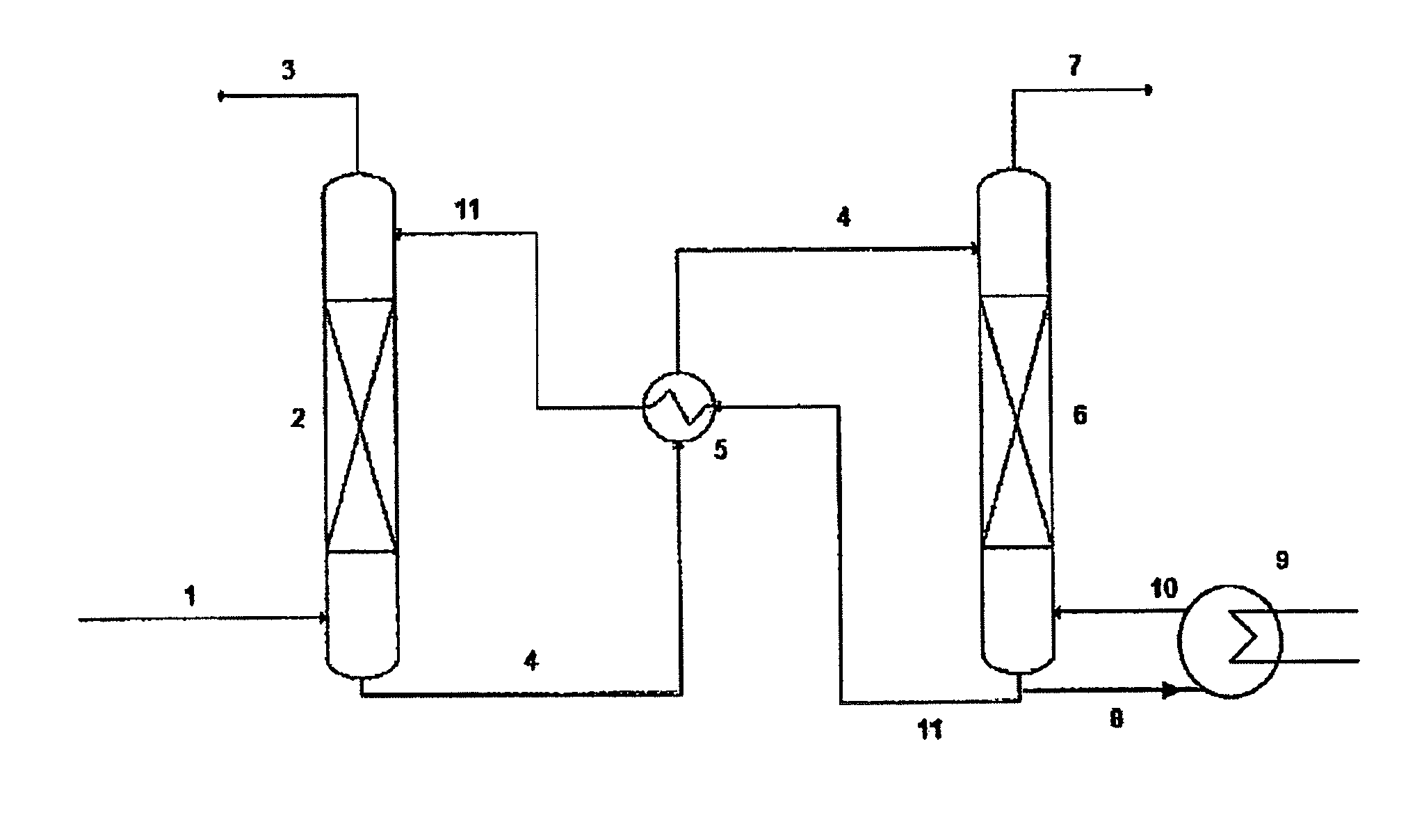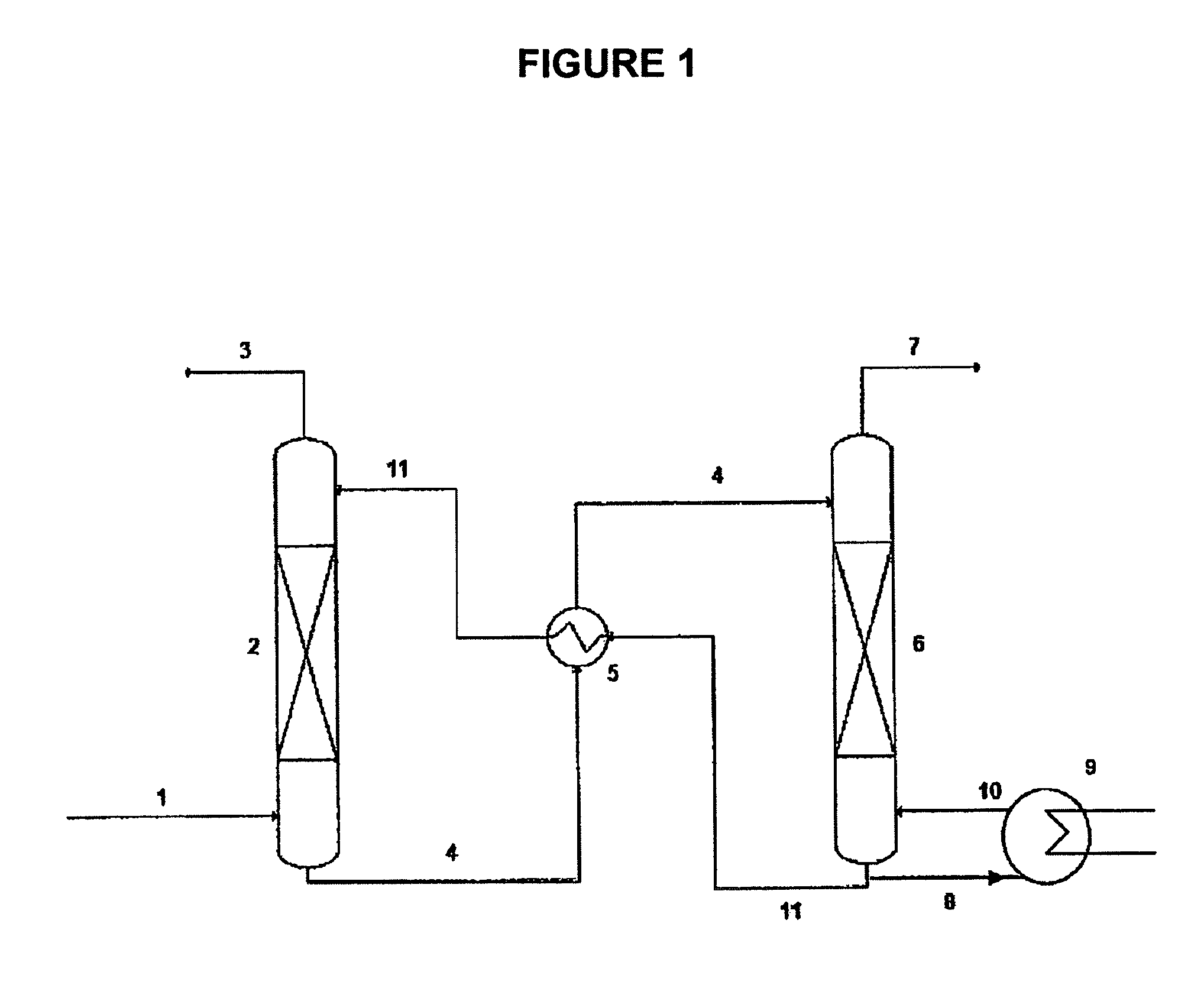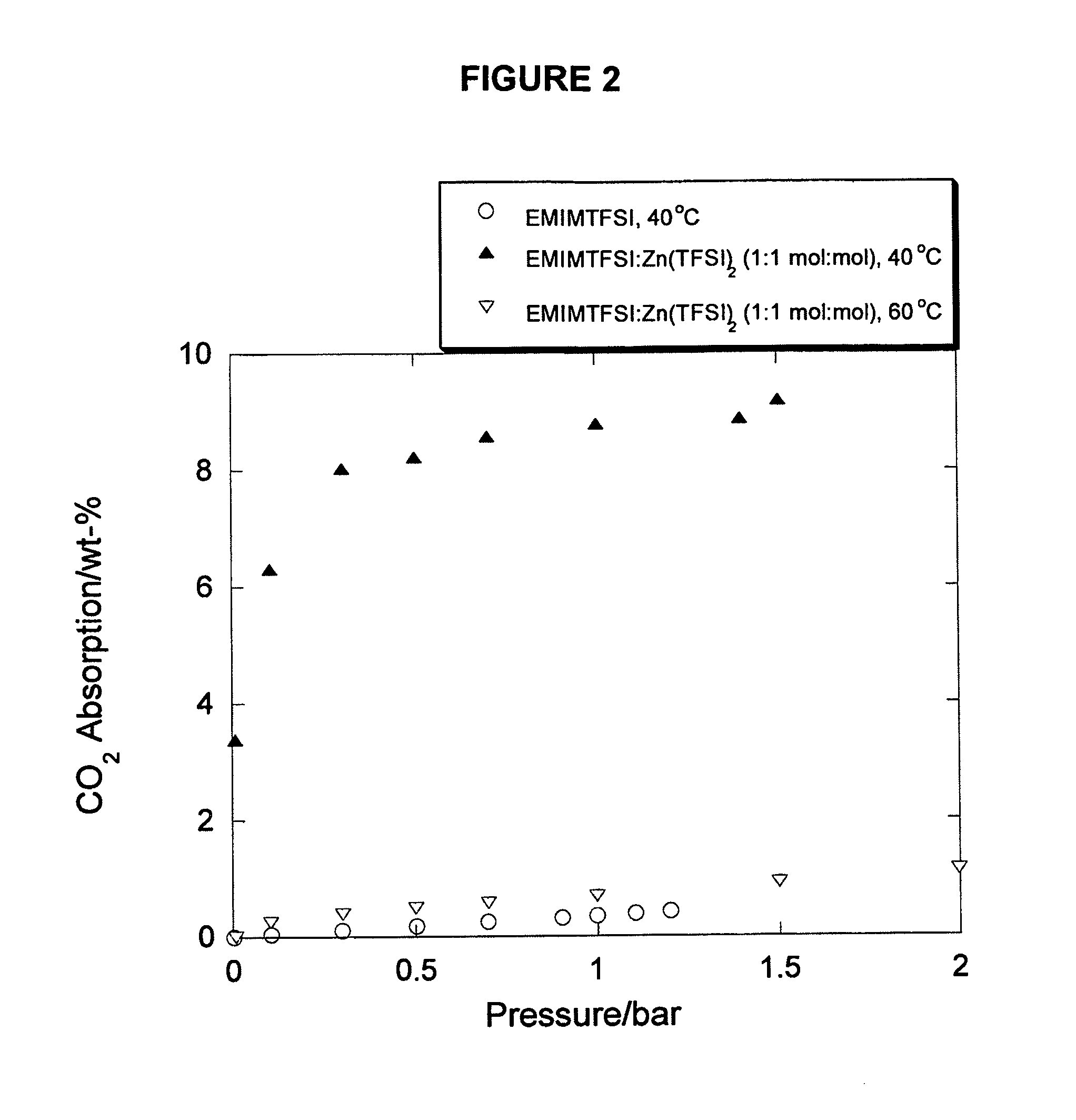Ionic liquids
a technology of liquids and gases, applied in the direction of liquid degasification, separation processes, polycrystalline material growth, etc., can solve the problems of reducing the absorption efficiency of ionic liquids, requiring elaborate and time-consuming synthetic procedures, and producing extra waste streams
- Summary
- Abstract
- Description
- Claims
- Application Information
AI Technical Summary
Benefits of technology
Problems solved by technology
Method used
Image
Examples
example 1
[EMIM][TFSI] Containing Transition Metal
[0133]Synthesis of Metal bis(trifluoromethanesulfonyl)imide Hydrate M(TFSI)2.×(hydrate) (M=Co, Cu, Ni, Zn)
[0134]Metal bis(trifluoromethanesulfonyl)imides were synthesized by the methods of Earle, M. J. et al. (Earle, M. J. et al, Chem. Commun. 2004, 1368-1369; Earle, M. J. WO 200272260). 0.02 mol HNTf2 was dissolved in 20 mL deionized water and then 0.01 mol metal hydroxide M(OH)2 (M=Cu, Co, Ni) was added to this solution. After the suspension was stirred for ˜24 hours at room temperature, water was removed in vacuo at 40° C. The obtained products were dried under high vacuum at 60° C. for at least 24 hours. Hydrated products were obtained with yields between 89%-92%.
[0135]To a solution of HNTf2.1.25 H2O (6 g, 19.76 mmol) in 30 mL deionised water was added zinc metal (clumps) (1.94 g, 29.64 mmol). The suspension was stirred at room temperature for 24 h, after which the pH was 7. The reaction was filtered and the volatile components of the filt...
example 2
[EMIM][TFSI] Containing Main-Group Metal
[0146]Synthesis of Magnesium (II) bis(trifluoromethanesulfonyl)imide
[0147]To a solution of HNTf2.1.25H2O (2.0 g, 6.59 mmol) in 10 mL deionised water was added magnesium turnings (0.08 g, 3.29 mmol). The reaction bubbled as H2 was evolved. The reaction was stirred at room temperature for 10 h, after which the pH was 7. The reaction mixture was filtered to remove particulates and the volatile components of the filtrate were removed in vacuo. The product was further dried under vacuum at 150° C. overnight yielding a white solid (1.61, 84%). The product was found to have 0.09 equivalents of water as determined by Karl-Fischer titration. The magnesium content was found to be 4.23% by ICP-OES (calc. 4.15%). 19F NMR 200 MHz (DMSO-d6): δ-79.18. MS (ESI, MeOH)−280.2.
Preparation of Magnesium (II) containing IL [EMIM][TFSI]-Mg(TFSI)2 (4:3 mol:mol)
[0148]To a round bottom flask was added magnesium bis(trifluoromethanesulfonyl)imide (0.75 g, 1.28 mmol) and ...
example 3
[EMIM][DCA] containing Zn2+
Synthesis of Zinc Dicyanamide
[0153]Zinc dicyanamide was prepared using a method similar to that of Manson, J. L et al (Manson, J. L.; Lee, D. W.; Rheingold, A. L.; Miller, J. S. Inorg. Chem. 1998, 37, 5966-5967). A solution of sodium dicyanamide (2.0 g, 22.46 mmol) in deionised water (80 mL) was added to a stirring solution and zinc nitrate hexahydrate (3.34 g, 11.23 mmol) in deionised water (40 mL). The reaction was stirred at room temperature for 16 h after which, the reaction was filtered and the precipitate was washed with deionised water. The precipitate was placed under vacuum and over phosphorous pentoxide overnight to dry. The product was a white solid (1.63 g, 76%). The melting point is above 300° C. (DSC).
Preparation of Zinc (II) containing IL [EMIM][DCA]-Zn(DCA)2 (1:0.5 mol:mol)
[0154]To a round bottom flask containing 1-ethyl-3-methylimidazolium dicyanamide (0.448 g, 2.53 mmol) was added zinc dicyanamide (0.250 g, 1.26 mmol). The mixture was sti...
PUM
| Property | Measurement | Unit |
|---|---|---|
| Temperature | aaaaa | aaaaa |
| Temperature | aaaaa | aaaaa |
| Temperature | aaaaa | aaaaa |
Abstract
Description
Claims
Application Information
 Login to View More
Login to View More - R&D
- Intellectual Property
- Life Sciences
- Materials
- Tech Scout
- Unparalleled Data Quality
- Higher Quality Content
- 60% Fewer Hallucinations
Browse by: Latest US Patents, China's latest patents, Technical Efficacy Thesaurus, Application Domain, Technology Topic, Popular Technical Reports.
© 2025 PatSnap. All rights reserved.Legal|Privacy policy|Modern Slavery Act Transparency Statement|Sitemap|About US| Contact US: help@patsnap.com



